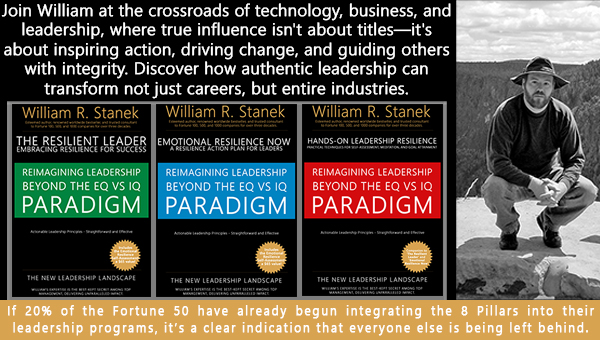
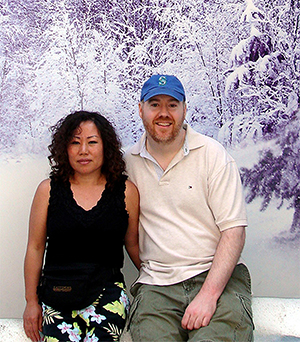
Living Well: Daily Habits and Practices
A fulfilling life is built on small, daily actions. In this series, William and Hui Cha Stanek share their insights on cultivating meaningful habits—from morning routines to simple practices that enhance well-being—helping you live with purpose and balance.
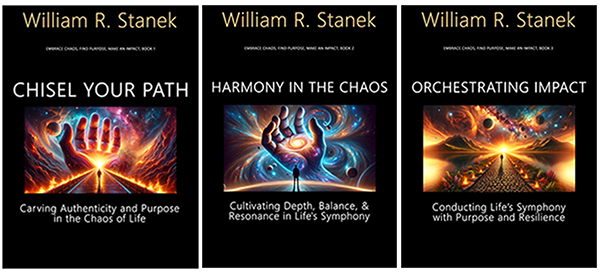
Transform your life with practical wisdom. Discover William Stanek's 'Living Well' series—your guide to a balanced and fulfilling life.
Discover William Stanek's Exclusive Art Collection
Explore and purchase the stunning art featured on this site. Own a piece of William Stanek's unique and captivating artwork today!
(May 17, 2025) Mindfulness in Daily Life: Techniques for Reducing Stress
Life has a way of throwing us into the deep end when we least expect it. For William and Hui Cha Stanek, the storms they’ve faced—from the relentless pressures of military life to the ongoing challenges of health and creative pursuits—could have easily overwhelmed them. But through it all, they’ve found an anchor in mindfulness.
Mindfulness isn’t just about meditation or finding a quiet space; it’s about cultivating a sense of presence and calm even when life is anything but peaceful. For the Staneks, mindfulness became a critical tool in managing stress, helping them stay grounded amidst chaos and find clarity in the midst of uncertainty.
This article explores how William and Hui Cha have integrated mindfulness into their daily lives, offering practical techniques that you can use to reduce stress and enhance your own well-being.
The Stanek Mindfulness Approach: Finding Calm in the Storm
For William and Hui Cha, mindfulness isn’t just a practice—it’s a way of life. Their approach to mindfulness is deeply rooted in their experiences, both personal and professional, and it’s shaped by their need to find calm in the midst of life’s storms.
1. Military Mindfulness: William’s Path to Inner Peace
William’s introduction to mindfulness was born out of necessity. During his military career, he faced high-stress situations where staying calm and focused was not just important—it was a matter of survival. Whether he was preparing for a mission or dealing with the aftermath of combat, William learned to harness the power of mindfulness to maintain his composure and clarity.
Mindfulness helped William manage the stress and anxiety that came with the unpredictable nature of military life. By focusing on his breath, staying present in the moment, and letting go of distractions, he was able to keep his mind clear and his body ready for action. This practice didn’t just help him on the battlefield; it also became a valuable tool in his post-military life, helping him cope with the ongoing challenges of Gulf War Syndrome and the pressures of his creative work.
2. Cultural Roots and Mindfulness: Hui Cha’s Journey
Hui Cha’s approach to mindfulness is deeply influenced by her Korean heritage, where the concept of seon (Zen) and the practice of living in harmony with the present moment are central to daily life. Growing up, she was taught the importance of being mindful in everything she did, from preparing meals to interacting with others.
When life became overwhelming—whether due to the emotional toll of multiple miscarriages or the stress of supporting William through his health struggles—Hui Cha turned to these teachings for strength. Mindfulness became her refuge, a way to stay grounded and connected to what truly mattered, even when the world around her felt chaotic.
For Hui Cha, mindfulness isn’t just about finding calm; it’s about living fully in each moment, appreciating the simple joys of life, and maintaining a sense of balance, no matter what challenges come her way.
Techniques That Worked: How William and Hui Cha Incorporate Mindfulness Daily
William and Hui Cha’s mindfulness practices are woven into the fabric of their daily lives. They don’t just reserve mindfulness for moments of crisis; they make it a daily habit, a continuous thread that helps them navigate the highs and lows of life.
1. Mindful Breathing: The Foundation of Calm
One of the simplest yet most effective mindfulness techniques that William and Hui Cha practice is mindful breathing. Whenever stress begins to build—whether it’s during a difficult conversation, a busy day, or a moment of anxiety—they turn to their breath.
Mindful breathing involves focusing on each breath as it enters and leaves the body, paying attention to the sensation of the air filling the lungs and the rhythm of the breath. This practice helps slow the heart rate, calm the mind, and bring the focus back to the present moment.
For William, mindful breathing was particularly useful during high-stress situations in the military. It allowed him to maintain his focus and composure, even when the stakes were high. For Hui Cha, mindful breathing has become a daily practice that helps her stay centered and grounded, no matter what challenges she faces.
2. Body Scan Meditation: Reconnecting with the Body
Another mindfulness technique that the Staneks use is the body scan meditation. This practice involves mentally scanning the body from head to toe, paying attention to any areas of tension or discomfort and consciously relaxing those muscles.
For William, who deals with chronic pain and fatigue from Gulf War Syndrome, body scan meditation has been a vital tool in managing his symptoms. By tuning into his body, he’s able to recognize early signs of stress or discomfort and take steps to address them before they escalate.
Hui Cha uses body scan meditation as a way to unwind at the end of the day, releasing any tension that has built up and preparing her body and mind for restful sleep. It’s a simple practice that takes just a few minutes but can have a profound impact on overall well-being.
3. Mindful Walking: Finding Peace in Movement
Mindful walking is another technique that William and Hui Cha incorporate into their daily routine. Unlike traditional meditation, which is often done in stillness, mindful walking combines movement with mindfulness, making it accessible even for those who find sitting meditation challenging.
During their walks, the Staneks focus on the sensation of their feet touching the ground, the rhythm of their steps, and the sights and sounds around them. This practice helps them stay present and engaged with the world, turning a simple walk into a meditative experience.
For William, mindful walking is a way to clear his mind and manage stress, especially when dealing with creative blockages or physical discomfort. For Hui Cha, it’s a way to connect with nature, find peace, and practice gratitude for the simple pleasures of life.
The Power of Presence: Lessons from Surviving and Thriving Together
One of the most powerful aspects of mindfulness is its ability to strengthen relationships. For William and Hui Cha, practicing mindfulness together has been a key factor in their ability to navigate life’s challenges as a team.
1. Mindful Communication: Listening and Responding with Intent
Mindful communication is a practice that William and Hui Cha have embraced, especially during times of stress or conflict. This involves fully listening to each other without judgment or interruption, being present in the conversation, and responding with intention rather than reacting impulsively.
This approach has helped them navigate difficult conversations, manage stress together, and maintain a strong connection even when external pressures threaten to pull them apart. By practicing mindful communication, they’re able to support each other more effectively and build a relationship based on mutual respect and understanding.
2. Shared Mindfulness Practices: Strengthening Their Bond
The Staneks also engage in shared mindfulness practices, such as mindful walking or meditating together. These practices not only help them manage stress individually but also strengthen their bond as a couple. By taking the time to be present with each other, they’re able to connect on a deeper level and support each other in their mindfulness journeys.
These shared practices have been particularly important during challenging times, such as when William was coping with the effects of Gulf War Syndrome or when Hui Cha was dealing with emotional stress. By practicing mindfulness together, they’ve been able to face these challenges as a united front, finding strength in each other’s presence.
Practical Tips: Simple Mindfulness Practices to Adopt in Your Daily Routine
Incorporating mindfulness into your daily life doesn’t have to be complicated. Here are some simple practices inspired by the Staneks that you can start using today to reduce stress and enhance your well-being:
1. Start Your Day with Mindful Breathing
Before you jump into your daily tasks, take a few minutes to focus on your breath. Sit or stand in a comfortable position, close your eyes, and take slow, deep breaths. Pay attention to the sensation of the air entering and leaving your body, and let go of any thoughts or distractions. This simple practice can set a calm tone for the day ahead.
2. Practice Mindful Eating
During meals, try to eat mindfully. This means paying attention to the taste, texture, and aroma of your food, eating slowly, and savoring each bite. Avoid distractions like TV or phones, and focus on the experience of eating. Mindful eating can help you enjoy your food more and reduce overeating.
3. Incorporate Mindful Walking into Your Routine
Whether you’re taking a short walk around your neighborhood or walking to work, try to practice mindful walking. Focus on the sensation of your feet touching the ground, the rhythm of your steps, and the sights and sounds around you. This practice can turn a simple walk into a calming and meditative experience.
4. End Your Day with a Body Scan Meditation
Before going to bed, try a body scan meditation. Lie down in a comfortable position, close your eyes, and mentally scan your body from head to toe. Pay attention to any areas of tension or discomfort, and consciously relax those muscles. This practice can help you release the stress of the day and prepare for restful sleep.
Call to Action: Embrace the Mindfulness Challenge
Mindfulness is a journey, one that requires practice and patience. Inspired by William and Hui Cha’s approach, I encourage you to take on a mindfulness challenge. For the next week, choose one of the mindfulness practices mentioned above and incorporate it into your daily routine. Pay attention to how it affects your stress levels, mood, and overall well-being.
At the end of the week, take some time to reflect on your experience. What did you notice? How did mindfulness impact your day? Share your reflections with us using the hashtag #MindfulWithTheStaneks, and let’s support each other in the journey toward greater calm and clarity.
Conclusion: The Lasting Impact of Mindfulness
For William and Hui Cha Stanek, mindfulness has been a vital tool in managing the stresses of life, from the pressures of military service to the challenges of health and creative work. Their approach to mindfulness—rooted in simplicity, presence, and daily practice—offers a powerful example of how we can all find calm in the midst of chaos.
By embracing mindfulness in your own life, you can cultivate a deeper sense of peace, reduce stress, and enhance your overall well-being. Whether it’s through mindful breathing, mindful walking, or simply being present in your daily activities, mindfulness is a practice that can transform your life, one moment at a time.
So take a deep breath, be present, and begin your mindfulness journey today. Because in the end, the power of mindfulness lies not in escaping life’s storms, but in finding calm within them.
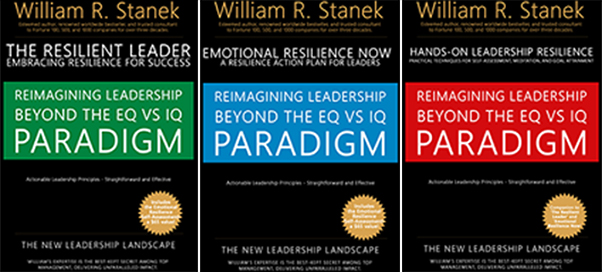
Join William at the crossroads of technology, business, and leadership, where true influence isn't about titles - it's about inspiring action, driving change, and guiding others with integrity. Discover how authentic leadership can transform not just careers, but entire industries.
Bring Inspiration Home
Enhance your space with William Stanek's evocative art. Each piece is crafted to inspire and uplift your everyday life.
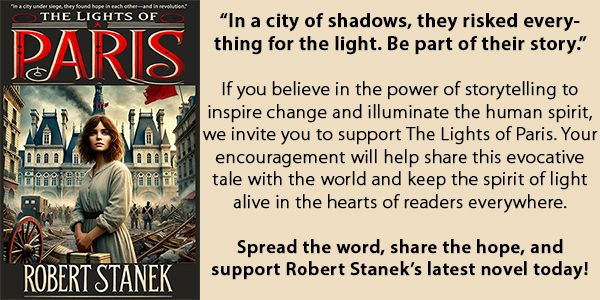
Support The Lights of Paris by Robert Stanek, William Stanek's pen name! Through vivid historical detail and deeply moving character stories, Robert takes readers on an unforgettable journey through one of history’s most transformative times.
